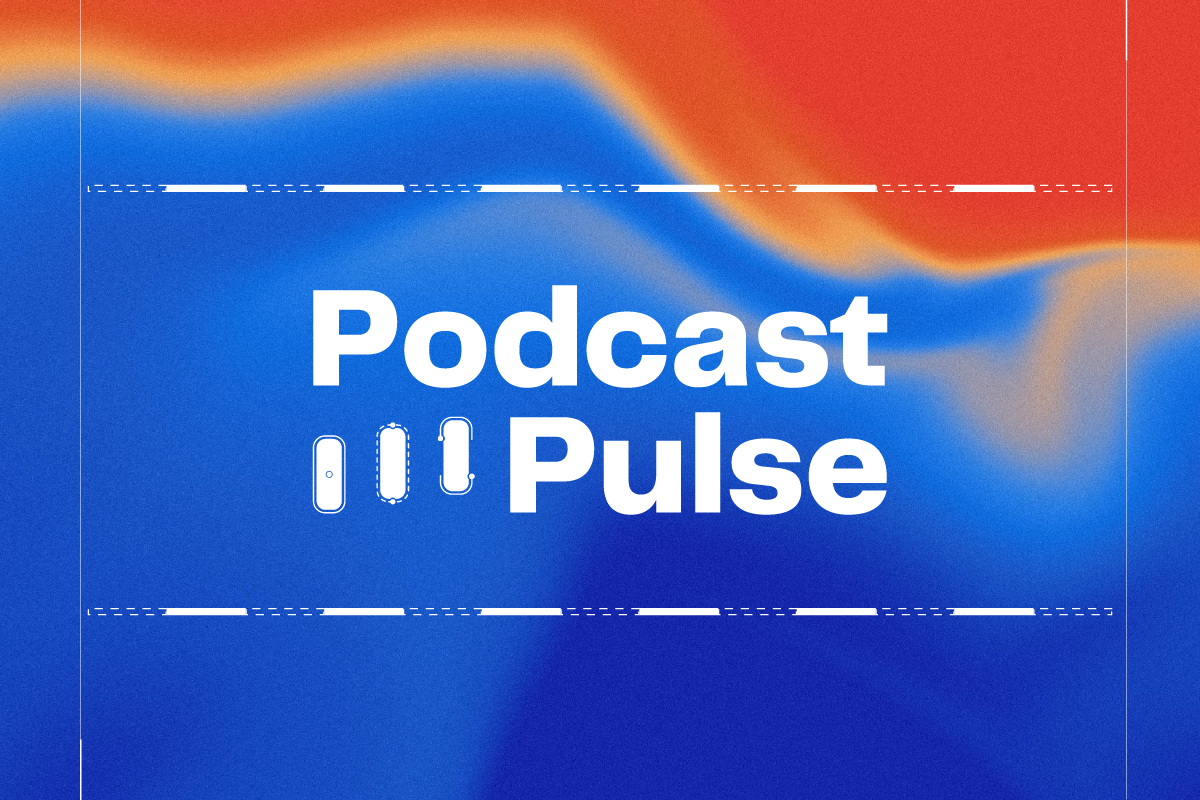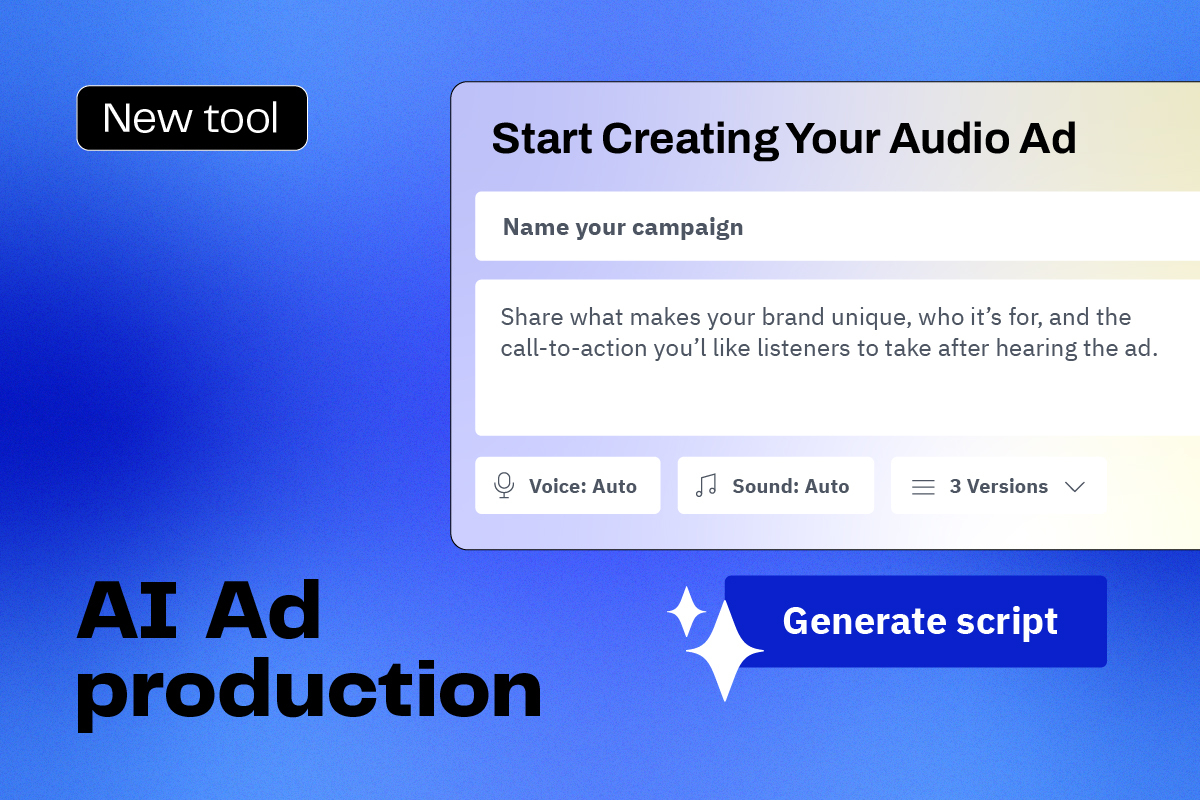Are you listening? How Acast quantified the 'attention economy' for podcasting

The results of a major new study into the attention economy, from Acast and Differentology, has shown marked differences in how people behave when listening to music and podcasts. The results of a major new study into the attention economy, from Acast and Differentology, has shown marked differences in how people behave when listening to music and podcasts:

What is the attention economy? According to official sources, attention is defined as “the act or state of applying the mind to an object of sense or thought”.
In media and advertising, the attention economy is the fight for consumer awareness, and efficient ways of marketing for product recall. Many are talking about it, but few are quantifying it.
So, together with Differentology — the innovative market research company — we set about doing just that. We wanted to demonstrate the value of podcasts, and show that podcast advertising is more effective than other audio channels like radio and music streaming.
The results are staggering, and demonstrate the power that podcasts have to connect audiences, deliver messaging and — most importantly — keep people listening.
A finite resource.Previously, attention research has been limited to eye-tracking studies. And, for audio, attention has been a hard metric to test. Until now.
How did we do it?
Acast conducted a 15-minute online quantitative survey, in which participants were asked to pay attention to a video of someone washing up or ironing (to replicate the real-life experience of multitasking when listening to audio or second-screening) while audio played in the background. They were then asked questions about the content and advertising they listened to.
What do the results say?
When it comes to absolute, undivided attention, a massive 64% of respondents pay full attention to podcasts – compared to 49% of music streamers and 44% of radio listeners. This is great evidence for podcasts’ ability to encourage connection and engagement.
When it comes to recalling information, podcasts lead the way again. For example, when asked nine questions about the ads they’d been played, 35% of respondents were able to recall and correctly answer at least three questions for host-read podcast advertising, and 36% paid attention to the generic podcast advertising (dynamic adverts) – a nine-point percentage increase over the average. Pretty impressive, especially when you consider those answering radio questions correctly were three percentage points below the average.
But what’s driving this? More than two thirds (68%) agree that podcast adverts “stand out” over and have more “clarity” than music and radio, while 54% describe podcasts as “engaging”.
Finally, the research shows that podcast ads promote affinity, with 52% agreeing that host-read adverts are for “people like me” — but only a third (33%) feeling affinity for music streaming ads.
Our research demonstrates contextual evidence of engagement with podcasts, but also shows why having better ads — designed specifically for podcasts — is equally important. If you’re interested in finding out more, and want to develop connections for your brand with millions of engaged podcast listeners, please email uk-sales@acast.com.
Methodology
Within the survey, there were four groups exposed to various audio mediums.
- Podcast spot ad group: N=200 weekly podcast listeners played a section of the Sh*gged Married Annoyed podcast and creative test ad (part of ad reel). Podcast host-read ad group: N=200 weekly podcast listeners played a section of the Sh*gged Married Annoyed podcast and host-read ad (part of ad reel)
- Radio ad group: N=200 weekly radio listeners played a section of the Capital FM radio show and creative test ad (part of ad reel)
- Streaming music ad group: N=200 weekly music streaming listeners played a section of a Spotify pop/chart playlist and creative test ad (part of ad reel)
- All participants were exposed to the medium they claimed to be “weekly listeners of”, and were asked to listen to both the content and the advertising
- This included exposing respondents to the natural number of ads per media
- One of the ads was a fake audio clip (to avoid any brand bias/category effects)
- Participants were then asked brand KPIs and recall questions on the advertising they heard, to see if they recalled the key points and to measure attention per medium.
The results of a major new study into the attention economy, from Acast and Differentology, has shown marked differences in how people behave when listening to music and podcasts. The results of a major new study into the attention economy, from Acast and Differentology, has shown marked differences in how people behave when listening to music and podcasts:

What is the attention economy? According to official sources, attention is defined as “the act or state of applying the mind to an object of sense or thought”.
In media and advertising, the attention economy is the fight for consumer awareness, and efficient ways of marketing for product recall. Many are talking about it, but few are quantifying it.
So, together with Differentology — the innovative market research company — we set about doing just that. We wanted to demonstrate the value of podcasts, and show that podcast advertising is more effective than other audio channels like radio and music streaming.
The results are staggering, and demonstrate the power that podcasts have to connect audiences, deliver messaging and — most importantly — keep people listening.
A finite resource.Previously, attention research has been limited to eye-tracking studies. And, for audio, attention has been a hard metric to test. Until now.
How did we do it?
Acast conducted a 15-minute online quantitative survey, in which participants were asked to pay attention to a video of someone washing up or ironing (to replicate the real-life experience of multitasking when listening to audio or second-screening) while audio played in the background. They were then asked questions about the content and advertising they listened to.
What do the results say?
When it comes to absolute, undivided attention, a massive 64% of respondents pay full attention to podcasts – compared to 49% of music streamers and 44% of radio listeners. This is great evidence for podcasts’ ability to encourage connection and engagement.
When it comes to recalling information, podcasts lead the way again. For example, when asked nine questions about the ads they’d been played, 35% of respondents were able to recall and correctly answer at least three questions for host-read podcast advertising, and 36% paid attention to the generic podcast advertising (dynamic adverts) – a nine-point percentage increase over the average. Pretty impressive, especially when you consider those answering radio questions correctly were three percentage points below the average.
But what’s driving this? More than two thirds (68%) agree that podcast adverts “stand out” over and have more “clarity” than music and radio, while 54% describe podcasts as “engaging”.
Finally, the research shows that podcast ads promote affinity, with 52% agreeing that host-read adverts are for “people like me” — but only a third (33%) feeling affinity for music streaming ads.
Our research demonstrates contextual evidence of engagement with podcasts, but also shows why having better ads — designed specifically for podcasts — is equally important. If you’re interested in finding out more, and want to develop connections for your brand with millions of engaged podcast listeners, please email uk-sales@acast.com.
Methodology
Within the survey, there were four groups exposed to various audio mediums.
- Podcast spot ad group: N=200 weekly podcast listeners played a section of the Sh*gged Married Annoyed podcast and creative test ad (part of ad reel). Podcast host-read ad group: N=200 weekly podcast listeners played a section of the Sh*gged Married Annoyed podcast and host-read ad (part of ad reel)
- Radio ad group: N=200 weekly radio listeners played a section of the Capital FM radio show and creative test ad (part of ad reel)
- Streaming music ad group: N=200 weekly music streaming listeners played a section of a Spotify pop/chart playlist and creative test ad (part of ad reel)
- All participants were exposed to the medium they claimed to be “weekly listeners of”, and were asked to listen to both the content and the advertising
- This included exposing respondents to the natural number of ads per media
- One of the ads was a fake audio clip (to avoid any brand bias/category effects)
- Participants were then asked brand KPIs and recall questions on the advertising they heard, to see if they recalled the key points and to measure attention per medium.





